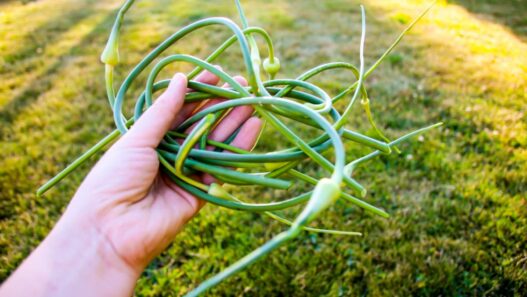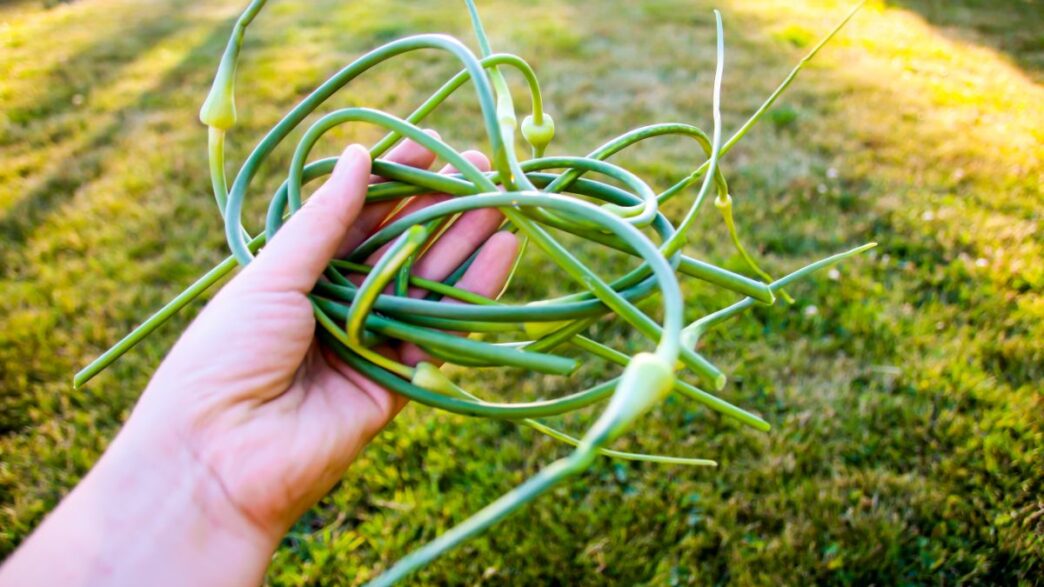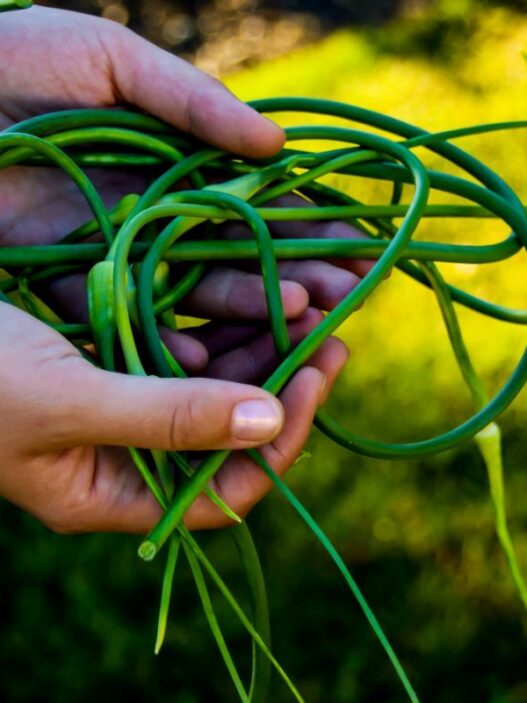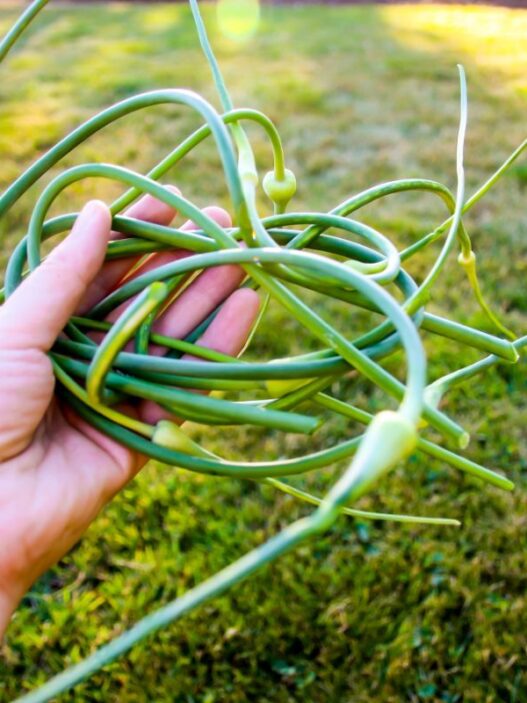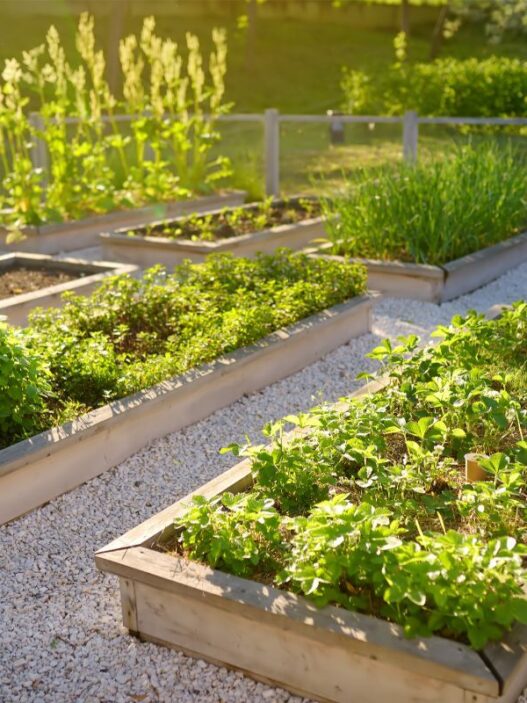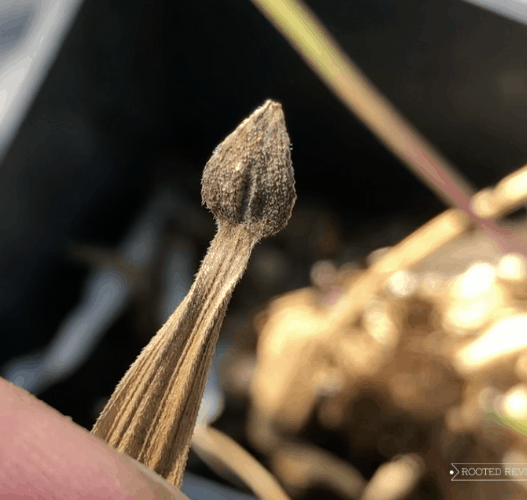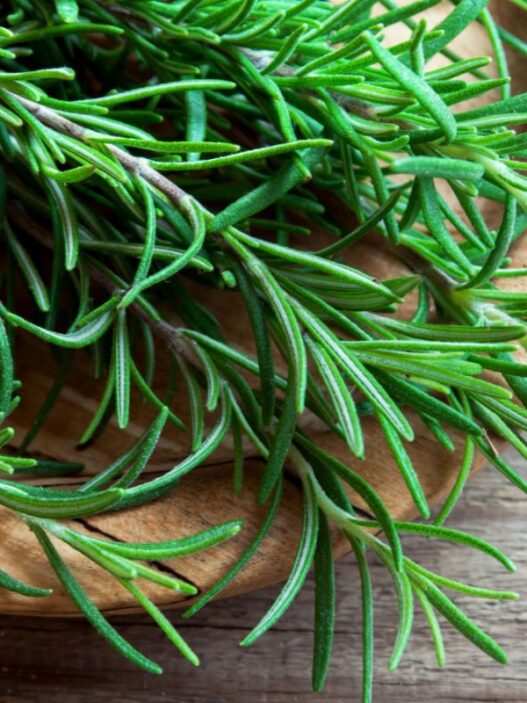Have you ever found garlic scapes or ramps in the farmer’s market or grocery aisle and wondered what the difference is between the two ingredients?
Garlic scapes are part of garlic plants, while the ramps come from wild onions. Although garlic scapes and ramps belong to the same family, I’ve also found that both ingredients have different appearances, tastes, and availability.
Other key differences between them are:
- Scapes are available in late spring to late summer, while ramps are available during early spring
- Ramps have a short storage duration than scapes
- Garlic scapes are used in stir-fries, pesto sauce, and creamed spinach, while ramps are grilled to serve as a treat or sauteed to add bold flavor to the dishes.
In this article, I’ll compare:
- The main 7 differences between garlic scapes vs. ramps
- Explain how to use them in your kitchen

What is the difference between garlic scapes and ramps?
Garlic scapes and ramps are both popular culinary delights!
But seven differences set them apart:
1. Plant Type
Alright, let me break it down! Garlic scapes and ramps come from two different plants belonging to the Allium family.
White garlic scapes are tender young shoots with long curly stems that only grow from hardneck or stiff-neck garlic plants variety; ramps, on the other hand, are a type of wild onion that grows in North America and are also known as leeks.
You can easily find them in woodlands and farmer’s markets.
2. Appearance
Both garlic scapes and ramps bring their unique appearance to the table, which makes them stand out in their own ways.
Garlic scapes are the true feast to the eyes because they are the vibrant green shoot that curls up as they grow and has a bud at the tip.
Visually they are a hit! Why?
Well, garlic scapes can transform even the simplest dishes into appetizing ones.
On the other side of the spectrum, we have ramps! They have long, slender, dark green leaves and are pinkish-white at the bottom with a small white bulb.
What fascinates me is that many foragers leave the bulb behind to let them regrow into a new plant next year.
The leaves of the ramps are often wrinkled, and if you take a closer look, you’ll notice a slightly glossy texture on them.
3. Taste
Taste is another significant factor that differentiates garlic scapes from ramps. How? Let me explain this to you in a bit of detail.
First off, we have garlic scapes which have a more delicate flavor and add a milder garlicky touch to your dishes.
Wait a minute, don’t mistake mild for boring! They are the symphony of a fresh, slightly sweet flavor for your taste buds. It is like a gentle breeze, not too overpowering but still present enough to make its mark and enhance your dishes.
On the flip side, ramps have a bold and spicy flavor which gives the harmonious blend of two culinary titans: garlic and onion. Its earthy taste is so intense and assertive that it makes a strong statement in your meals.
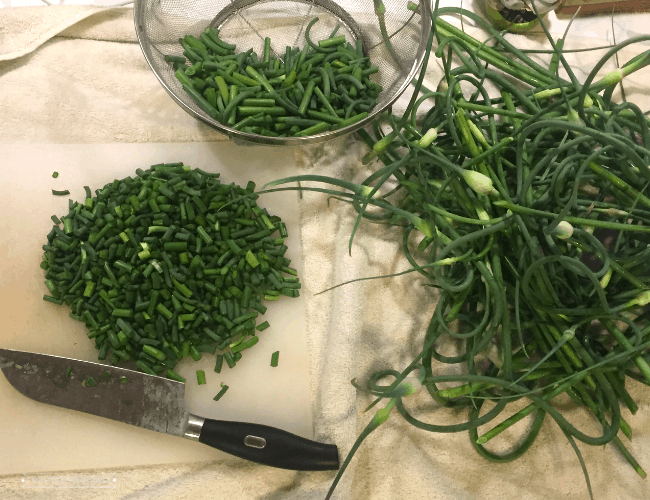
4. Harvesting Season
The next thing you need to know about garlic scapes and ramps is the difference in growth seasons.
Garlic scapes shoot from the plant in the late spring or early summer when nature is in full bloom and sunny days are just around the corner.
When the scapes curl and twist in the breeze, the farmers and gardeners snag them to sell in the market or use in various meals to savor.
In contrast, ramps emerge from the forest floor in early spring when the world is awakening from the winter slumber, and the sir starts to feel a little warmer.
5. Availability
Now, let’s talk about the availability of these culinary wonders, an essential factor that adds to their importance.
Garlic scapes are a bit more easily accessible during their peak seasons in the farmer’s market or grocery store vegetable aisles.
While ramps not only have a short growing season but are more of a delicacy because they are usually foraged from the wilds. There is a piece of worrying news, though. The ramps are endangered in some areas due to overharvesting by the foragers.
6. Storage Duration
The storage duration is another factor that differentiates the garlic scapes from ramps.
Garlic scapes are more trusty, and you can keep them fresh and ready for action in your refrigerator for up to two weeks or 15 days. Yup! These beauties can hang out and wait for their moment to shine in your recipes.
Conversely, ramps are a bit more time-sensitive when it comes to storage. They can only last a few days in your refrigerator, but if you use oil as a preservative, you can prolong the duration to one month.
7. Culinary Uses
Last but on least, garlic scapes and ramps offer their own set of possibilities for your taste buds and enhance your dishes to new heights.
Since garlic scapes have a milder and subtle garlicky essence, you can infuse a delicate aroma into your stir-fires, sautés, and other dishes, such as:
- Risottos
- Creamed spinach
- Pasta
- Pesto
- Vignette
- Butter
On the other hand, ramps are like chameleons of the culinary world because they take on different roles in your dishes without losing their flair.
Ramps can be sauteed to bring out their bold flavor or grilled for a delightful smokiness as a standalone treat.
Wait, there’s more! You can also toast ramps with kimchi and poached eggs, pickle them for a sour delight, or add to your fried rice.
Summing Up!
There you have it, my curious friends! I’ve compared garlic scapes vs. ramps and listed 7 key differences between these two culinary ingredients.
While belonging to the same family, they could not be more different in the flavorful and delicious experience.
From plant type to appearance to taste and harvesting seasons to culinary uses, garlic scapes and ramps bring their own distinct qualities to food enthusiasts.
